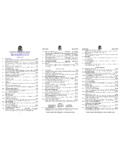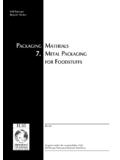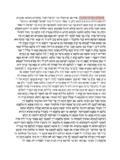Transcription of B a c k y a r d Beekeeping
1 BeekeepingBackyardBeekeepingANR-135A l a b a m a C o o p e r a t i v e E x t e n s i o n S y s t e m A l a b a m a A & M U n i v e r s i t y a n d A u b u r n U n i v e r s i t yBackyardBeekeepingA l a b a m a C o o p e r a t i v e E x t e n s i o n S y s t e m A l a b a m a A & M U n i v e r s i t y a n d A u b u r n U n i v e r s i t yJames E. TewANR-135 James E. Tew, Apiculture Advisor, Entomology and Plant Pathology, Auburn University, and State Specialist, Beekeeping , and Associate Professor, Department of Entomology, Ohio State University, Wooster, OH 44691, phone: 330-263-3684, e-mail: pesticides only according to the directions on the label. Follow all directions, precautions, and restrictions that are listed. Do not use pesticides on plants that are not listed on the pesticide rates in this publication are recommended only if they are registered with the Environmental Protection Agency and the alabama Department of Agriculture and Industries.
2 If a registration is changed or cancelled, the rate listed here is no longer recommended. Before you apply any pesticide, check with your county extension agent for the latest names are used only to give specific information. The alabama cooperative extension system does not endorse or guarantee any product and does not recommend one product instead of another that might be more information, call your county extension office. Look in your telephone directory under your county s name to find the in furtherance of cooperative extension work in agriculture and home economics, Acts of May 8 and June 30, 1914, and other related acts, in cooperation with the Department of Agriculture. The alabama cooperative extension system ( alabama A&M University and Auburn University) offers educational programs, materials, and equal opportunity employment to all people without regard to race, color, national origin, religion, sex, age, veteran status, or April 2004, 2004 by the alabama cooperative extension system .
3 All rights 0-9722580-6-XTable of ContentsStingS 1the CoSt of Beekeeping 2 RaCeS of honey BeeS 3the honey Bee Colony 3 Development StageS 6the Beehive DeSign 6 SeleCting pRoteCtive equipment anD honey extRaCting equipment 8how to StaRt Beekeeping 8eStaBliSheD ColonieS 11nuCleuS ColonieS 11hiving a SwaRm 12 SeleCting an apiaRy Site 12examining the Colony 13fall anD winteR management 15 SpRing management of oveRwinteReD ColonieS 17 SwaRming 18 the neCtaR flow 20 queen exCluDeR 20 SupeRing 21 neCtaR plantS 21 haRveSting honey 22 pRoCeSSing honey 23 haRveSting BeeSwax 24 SummeR management of honey Bee ColonieS 25 CommeRCial pollination 25 DiSeaSeS of BeeS 26 DiSeaSeS of the BRooD 26 DiSeaSeS anD peStS of aDult honey BeeS 28 Shipping SampleS foR DiSeaSe DiagnoSiS 35peStiCiDeS anD BeeS 35miSCellaneouS management teChniqueS 36 BeekeepeR oRganizationS 41 Beekeeping liteRatuRe 42 Tips and Additional InformationiS Beekeeping foR you?
4 IvCommon Bee RaCeS uSeD in the SoutheaSteRn uniteD StateS 2, 3 Common equipment neeDeD to StaRt one Beehive 7making SyRup 10 ChaRaCteRiStiCS of a gooD Bee yaRD 12 DemaRee methoD of SwaRm pRevention 20 DiReCtionS foR making vegetaBle ShoRtening pattieS 30how to get help 37 Common queStionS anD CommentS fRom people ConSiDeRing Beekeeping 43B a c k y a r d B e e k e e p i n giv alabama cooperative extension SystemIs Be e k e e pI n g f o r Yo u? Do you enjoy the outdoors and do you enjoy supporting nature? Do you enjoy gardening and nurturing plants? Do you enjoy woodworking? Do you enjoy a biological challenge? Do you enjoy talking to people with similar interests? Do you enjoy managing a sideline business? Do you enjoy participating in a historical craft? If you can answer yes to most of these questions, Beekeeping is for kept under a shed to protect colonies from heat and Beekeeping With a reputation for producing high-quality queens at affordable prices, alabama , Mississippi, and Georgia have historically been known as promi-nent queen and package producing areas.
5 Though queen production is still an important component of Beekeeping in the Southeast, hobby Beekeeping , providing pollination, and gardening Beekeeping are also important in this anyone can keep a hive or two of honey bees. The majority of beekeepers are hobbyists, who keep bees just for pleasure. Men, women, teens, or young children, to some extent, can all be beekeepers. Gardeners, retirees, professionals, teachers, physicians, construction workers, airline pilots, and lawyers are among the types of diversified occupations enjoying Beekeeping . A sideline Beekeeping hobby can earn extra income if colonies are managed efficiently. Even if you do not have a place to put a few colo-nies, most people can find a friendly farmer or land-owner on whose land to place colonies. If you enjoy biology, outdoor activities, woodworking, gardening, animal care, or if you are just looking for a sideline income, Beekeeping will probably interest you.
6 StingsEveryone knows that bees sting. Rarely, however, does a colony become so agitated that large numbers of bees attack, though it may seem like large numbers to the person being stung. The stinger and poison gland will remain attached to your skin if you are stung. Scrape or wipe off the stinger. It is thought that pulling the stinger with your fingers will force all the venom into the wound. Gen-erally, the honey bee is the only stinging The SoutheaStern united StateS is an excellent location for Beekeeping . The climate is gener-ally warm with mild winters. Though not the best states for honey production, the Southeast has an abundance of nectar and pollen-producing plants, and dependable honey crops of 40 to 60 pounds per colony are routine. With readily available food sources and an agreeable climate, honey bee colonies thrive in all parts of the area. A honey bee foraging on apple bee s stinger that has been torn from the bee s a c k y a r d B e e k e e p i n gB a c k y a r d B e e k e e p i n g alabama cooperative extension Systeminsect to leave its stinger behind after a stinging incident.
7 You should have some idea about how stings affect you before investing money in bees and equipment. Some swelling, redness, and itching at the site of the sting are considered normal. If you experience rare, extreme insect sting and bite reactions, such as difficulty in breathing or rashes away from the sting site, consult your physician before undertaking good, protective equipment, and put it on before entering the bee a young, healthy queen of any race is better than having an old queen of a selected Bee RaCes Used in the soUtheasteRn United statesItalian bees Italian bees are the most common race used in the Southeast. These bees are gener-ally yellow and are gentle and calm. Brood rearing starts in late winter and continues until late fall. Excessive summer brood rearing by these bees is considered by some to be a disadvantage. Food consumption is high in overwintered colonies.
8 Swarming is not excessive. Italian bees produce brilliantly white cappings on their honey. Carniolan bees The Carniolan bee has been described as a grayish-black Italian bee. These bees are exceptionally docile, and they are, in general, good honey producers. They winter with smaller clusters. However, Carniolans have a strong dispen-sation toward swarming. Brood production is linked to pollen availability so they have large summer but small winter bees Caucasian bees are grayish- colored and are gentle and calm in the hive. Though they are excellent brood producers, they do not reach full strength until midsummer. A productive bee yard in South queen cells produced by a commercial queen Cost of BeekeepingWhether you are interested in keeping bees as a hobby or as an occupation, you probably are interested in the cost in time and dollars. Beekeeping is not a particularly expensive hobby.
9 It can be a profitable business as well as a source of pleasure and relaxation if you can withstand the occasional sting and if you are willing to take care of your require more time at certain periods than they require at others. The amount of your time needed will depend on the number of colonies you keep and on your commitment. If you have only a few colonies, you will probably spend more time per colony than if you have a larger investment will depend on the equipment chosen. Cost of bees and equipment varies from year to year. Generally, a new hive with new bees will cost about $100 to $150. Request a catalog from bee supply dealers and compare prices. See the list at the end of this publication. They are weak swarmers but great producers of propolis (bee hive glue). In the fall, they may actually nearly close their hive entrances with propolis, leav-ing only small holes. This race seems to be more susceptible to Nosema, an occasional proto-zoan disease.
10 They also tend to be more aggres-sive bees Honey bees can be selected for many attributes such as disease resistance or honey production. A variety of these hybrid bees are available to beekeepers who desire spe-cific attributes. Particularly common are hybrid bees that are Varroa mite resistant. Hybrids are normally combinations of Italian, Caucasian, or Carniolan bees. Frequently called mite-resistant queens, hybrid queens have interested beekeepers as a way to help control mite pests. For a beekeeper wishing to use integrated pest management (IPM) concepts, using mite-resistant queens would be a good idea. These queens, however, cannot be counted on as the sole method of mite Beekeeping carnica Pollman; and the Caucasian bee, Apis mellifera caucasica Gorb. These races are the result of natural development in their homelands. A race of bees is generally named for the geographic area where it developed.
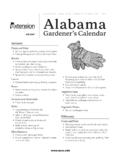
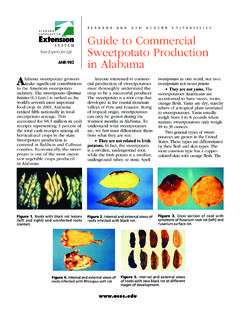
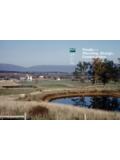
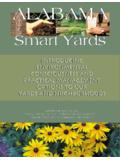

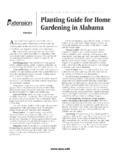
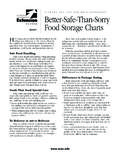
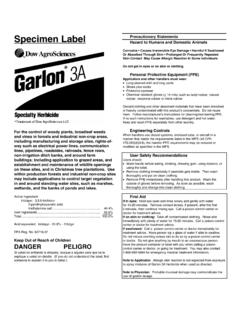
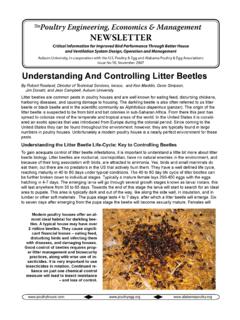
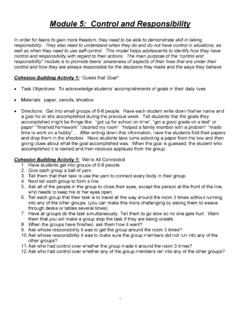

![Q¤k ¤n hCr] ©jh ¦J¨n©v ,«skIT r§ ¤p¥x v¤z t gª©JIvh …](/cache/preview/4/e/b/7/d/4/a/b/thumb-4eb7d4ab2cc4baf7b7aacb5cd2d054e5.jpg)
